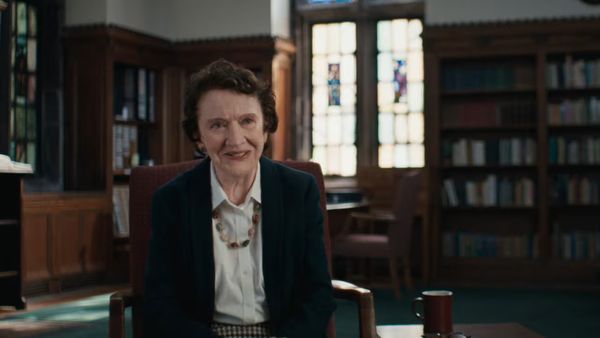Eye For Film >> Movies >> Mastermind: To Think Like A Killer (2024) Film Review
Mastermind: To Think Like A Killer
Reviewed by: Donald Munro

Most people who watch crime dramas or true crime shows on TV will be familiar with FBI's Behavioral Science Unit at Quantico and serial killer psychological profiling. Profiling, along with DNA analysis, has become the ubiquitous science magic of these programmes. No longer does a writer have to plot out an investigation. The detective just hands the crime scene over to the science guys and SHAZAM!, gun and badge in hand he heads off to catch the killer. SHAZAM! again, and there is no doubt in our minds that the true criminal is truly guilty. Real forensic science is hidden from the viewer by plot convenience and police propaganda. The documentary Mastermind: To Think Like A Killer shines a light into the Behavioral Science Unit and onto psychological profiling. It tells the story of someone that not many will be familiar with, the woman who was at its centre, Dr. Ann Burgess.
The story that Mastermind: To Think Like A Killer tells fits nicely into three episodes: beginning; middle; end. The documentary's progression is linear and conventional. It says what it has to say without the fast cuts between identical talking heads or the excessive recapping which plagues so many recent offerings. When speaking to the camera, interviewees are given more time than is conventional these days. When what they are saying is intercut with pictures, archive footage or other materials that evidence their point, it's done in a way that doesn't interfere with their flow.

The first episode, To Listen To A Killer, covers Burgess's illustrious career in nursing and her work with women who had experienced trauma as a result of rape and sexual abuse and how as a result she was brought into the FBI as a consultant. Then how she is co-opted by a group of maverick agents, exiled Mulder-like into a basement at Quantico. She brings not only her skills as an interviewer but the scientific method to the Behavioural Science Unit.
After the Behavioural Science Unit's initial success with the ski mask rapist, To Think Like A Killer, the second episode, looks at how the research was used both in the field and in training investigators, and how the techniques that were developed became disseminated throughout law enforcement.
The third and final episode, To Defend A Killer, is about what Burgess did after leaving the FBI. It examines her as a defence witness in the first trial of the Menéndez brothers. As adults, the Menéndez brothers killed their parents. Both had been subject to many years of sexual abuse at the hands of their father, for which there are multiple sources of corroboratory evidence. To depict the media landscape around the case, the documentary includes disgusting contemporaneous footage where many American celebrities openly mocked the victims of the paedophile.* Mastermind: To Think Like A Killer then goes on to look at her involvement in Andrea Constand's civil case against the serial rapist Bill Cosby, her instrumentality in the success of the case and how it played out into the Me Too movement. Without the focus on sensationalism of serial killers, this episode is able to explore more of Burgess's life and personality. It's more about who she is.
Burgess did not seek the limelight in the way some of her male colleagues did. Despite her lack of fame, she is likely more important than any of them.
* In the second trial the judge ruled that all evidence relating to physical, sexual and emotional abuse by the parents inadmissible. The Menéndez brothers were both convicted and sentenced to life without the possibility of parole. This is seen by many to be a grave miscarriage of justice.
Reviewed on: 11 Jul 2024















